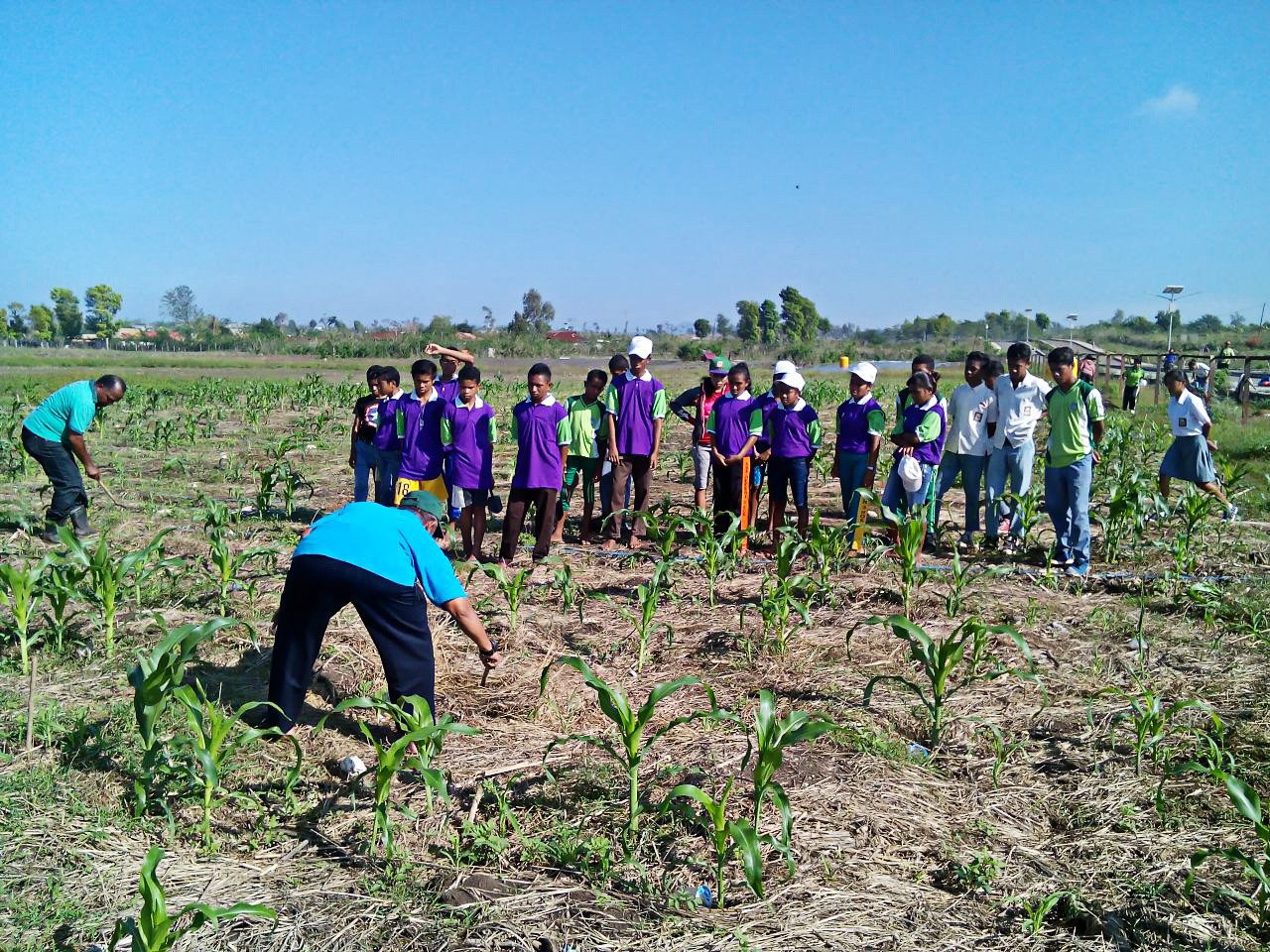Source: thejakartapost.com
Published: October 17, 2016
Soe, South Central Timor | Mon, October 17, 2016

Agriculture breakthrough – Teachers from state vocational school SMK Negeri 1 Soe show their students how to clear land using a conservation agriculture system introduced by the Food and Agriculture Organization (FAO) Indonesia in Soe, South Central Timor, East Nusa Tenggara, on Oct.11. (JP/Djemi Amnifu)
Djemi Amnifu
The Food and Agriculture Organization (FAO) Indonesia is piloting the development of conservation agriculture in East Nusa Tenggara (NTT) and West Nusa Tenggara (NTB), two eastern Indonesian provinces known for low rainfall.
The agricultural method initiative aims to reduce disaster risks caused by climate change in the two provinces.
“Activities to reduce risks of climate-related harvest failures through a conservation agriculture method have been conducted in NTB and NTT since October 2013,” FAO Indonesia’s conservation agriculture project manager for NTB and NTT, Ujang Suparman, told journalists during a recent field trip.
Accompanied by FAO Indonesia communication specialist, Siska Widyawati, Ujang visited Soe, the capital of South Central Timor regency to monitor the implementation of a conservation agriculture training program for students of state vocational school SMK Negeri 1 Soe.
Ujang explained that conservation agriculture was based on three main pillars: light soil preparation, continuous land surface covering and rotating legume and non-legume planting.
“In a long term, conservation agriculture can maintain and improve land fertility both physically and chemically. It can also prevent land erosion and increase the soil’s water catchment capacity and humidity,” he said.
Ujang further said that conservation agriculture could increase harvest yields and strengthen the capacity of plants to adapt to climate change, especially given uncertain rainfall.

Climate mitigation – Students from state vocational school SMK Negeri 1 Soe dig holes to plant corn seeds using a conservation agriculture system introduced by the Food and Agriculture Organization (FAO) Indonesia in Soe, South Central Timor, East Nusa Tenggara, on Oct.11. (JP/Djemi Amnifu)
Working with its partners in North Central Timor and Sumba in NTT and Lombok in NTB, FAO Indonesia has created 264 farming groups with a total membership of 5,597 farmers, 1,956 of whom are female farmers. They tested the conservation agriculture’s climate adaptation level via field schools.
“Each farming group has developed a conservation agriculture plot as a joint learning facility,” said Ujang.
He said conservation agriculture activities had been conducted in nine regencies, 27 districts and 65 villages in NTB and NTT. As many as 4,732 farming group members had implemented conservation agriculture techniques in their own fields to follow up on training they had received.
“Using a conservation agriculture approach, throughout four planting periods in 2014-2016, their corn yields amounted to 3.9 tons per hectare per harvest, up by 77 percent from 2.2 ton per hectare when they still used tradition corn planting methods,” said Ujang. (ebf)
